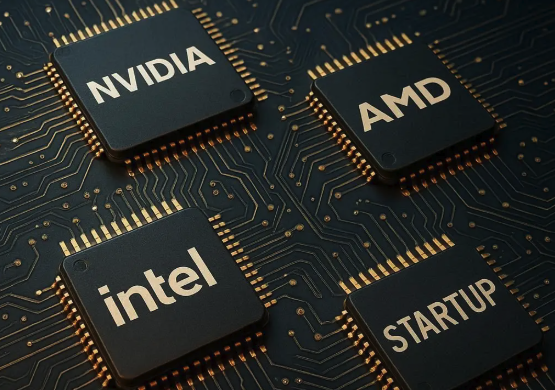The Great AI Chip War | 매거진에 참여하세요
The Great AI Chip War
#AI #GPT #Chip #Custome #Inference #Cost #NVIDIA #AMD
Why Is Everyone Making Their Own? :AI Boom Brings Hardware Back to the Spotlight
In the early 2020s, the tech world was dominated by software.
But since 2023, with generative AI going mainstream, hardware, especially AI chips has become central again.
Running models like ChatGPT, Claude, or Gemini requires massive computational power, primarily powered by GPUs.
And the market leader? NVIDIA.
Yet, in recent years, companies are challenging NVIDIA’s dominance.
AMD, Intel, ARM, and even AI firms like OpenAI and Anthropic are developing their own chips.
NVIDIA’s Dominance
Originally a graphics card manufacturer, NVIDIA captured the AI computing market with parallel-optimized GPU architectures.
AI-focused GPUs: A100, H100, B100
Global AI chip market share (2023): 80%+
Market cap briefly reached $3 trillion, making NVIDIA the world’s most valuable company for a moment
But NVIDIA GPUs are expensive and supply-constrained.
Both startups and big tech companies see the need to reduce dependency.
New Challengers in the Market

Company | Key Products | Performance | Price | Notes |
|---|---|---|---|---|
NVIDIA | A100, H100, B100 | Best AI training & inference, optimized for parallel computing | Tens of thousands USD | Market share 80%+, top-tier performance |
AMD | MI300 series | Competitive, slightly below H100 | Several thousand USD | Price-competitive, energy-efficient |
Intel | Gaudi 3 | Optimized for AI training & inference, strong x86 integration | Mid-range (thousands USD) | Transition from CPU to AI chip |
ARM (Apple, Qualcomm) | Apple M series, Snapdragon AI Engine | Low-power, edge & mobile AI optimized | Hundreds USD | Great for mobile & edge AI |
OpenAI | Custom (undisclosed) | In development | TBD | Aims to reduce NVIDIA dependency, optimize for AI workloads |
Anthropic, Cohere | Custom (undisclosed) | In development | TBD | Build chips for cost savings & competitive advantage |
The Essence of the AI Chip War
It’s not just about raw performance. The battle revolves around:
- Performance
→ Faster training, more efficient inference
- Energy efficiency
→ Large models consume enormous power; cost & carbon footprint matter
- Supply & pricing
→ High-end GPUs cost tens of thousands USD; affordable, accessible chips are needed
Geopolitics and Chips
The AI chip war also has geopolitical dimensions.
USA restricts GPU exports to China → AI chips become a national security concern
China accelerates domestic chip development (Huawei Ascend, Alibaba Pingtouge, Biren)
South Korea, Taiwan, Japan play key roles in the semiconductor supply chain, influencing global power balance
Future Scenarios
Multipolar Market → NVIDIA’s dominance will diversify; AMD, Intel, and specialized startups gain share
Internal AI Chips → AI companies like OpenAI, Google, and Amazon will deploy custom chips for in-house demand
Edge AI Chips → Explosion in AI chips for smartphones, IoT, and autonomous vehicles
Why Every AI Company Wants Their Own Chip
AI chips aren’t just components—they are core strategic assets.
Companies want to:
- Reduce NVIDIA dependency
- Cut costs
- Maximize performance
In the next decade, AI innovation will hinge not only on software but also on hardware dominance.
The 21st-century “new oil war” is really a battle over data and chips.






